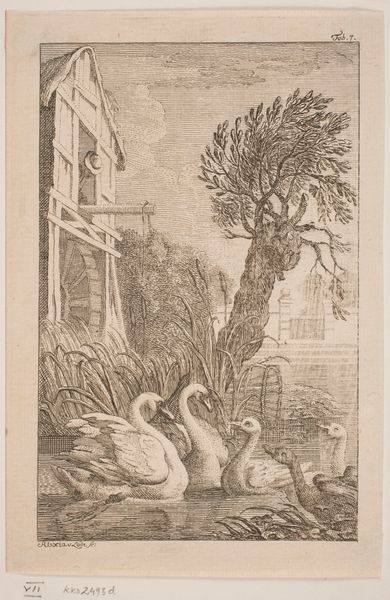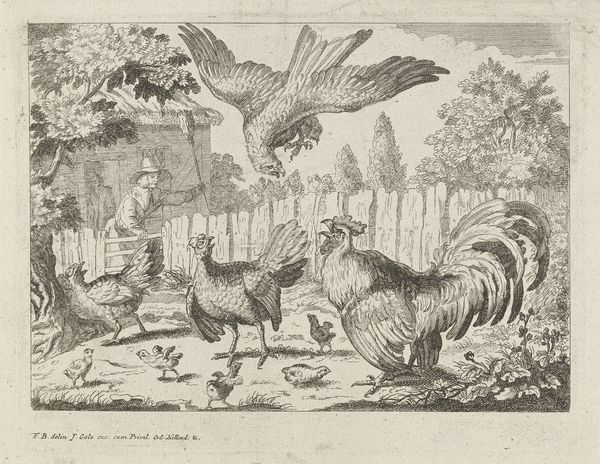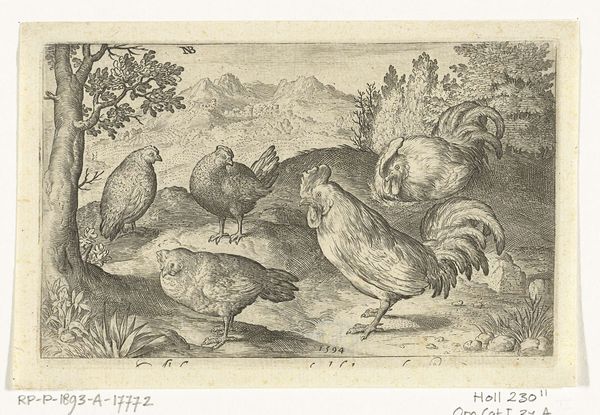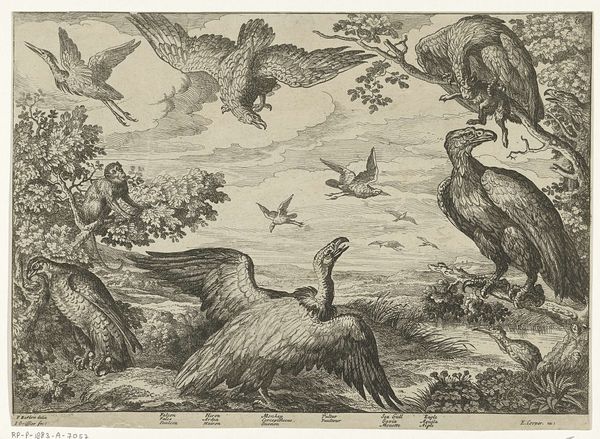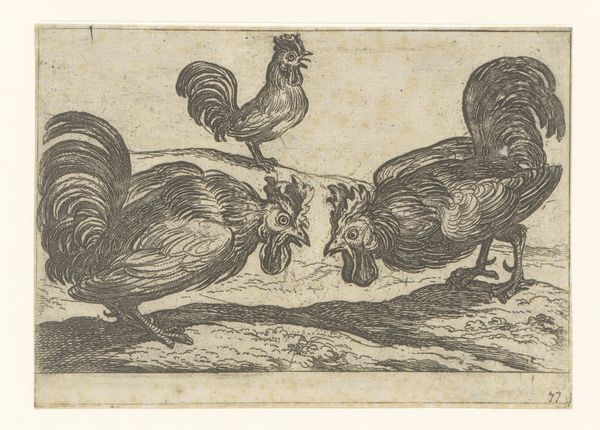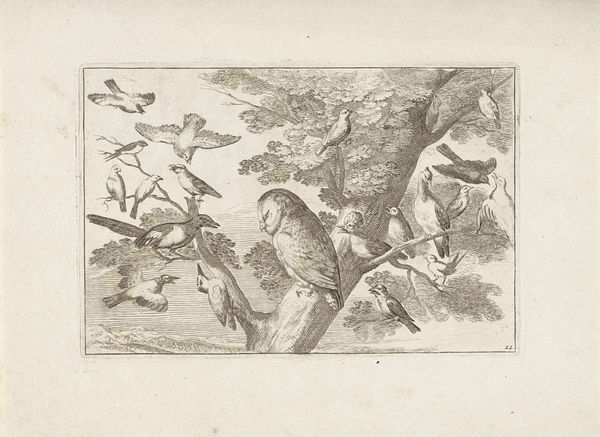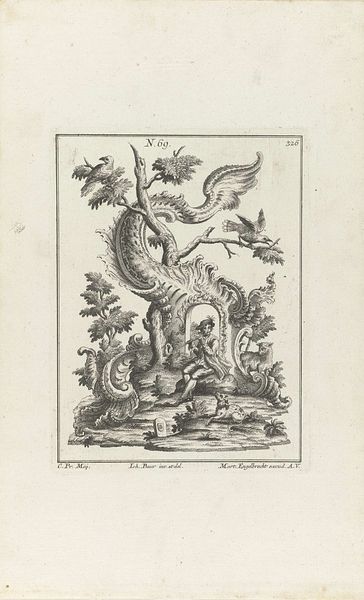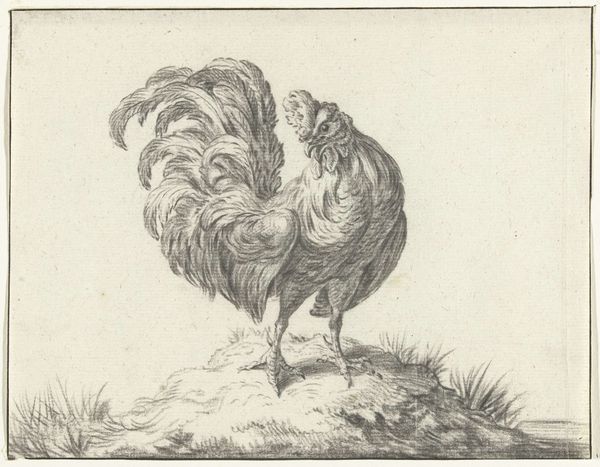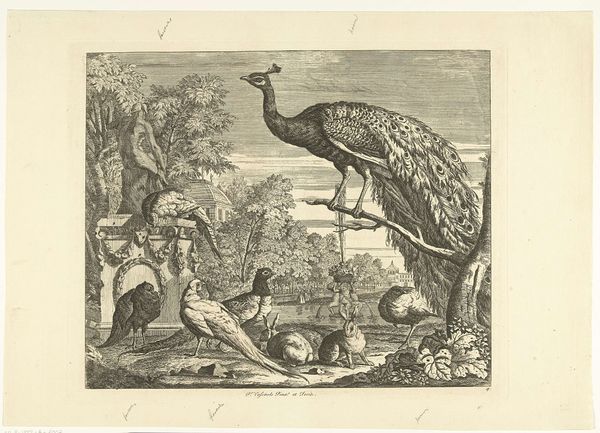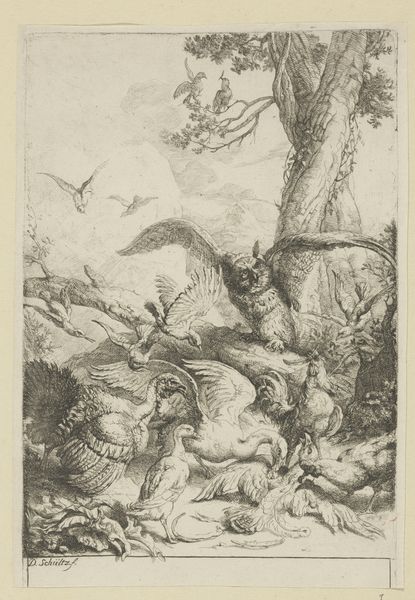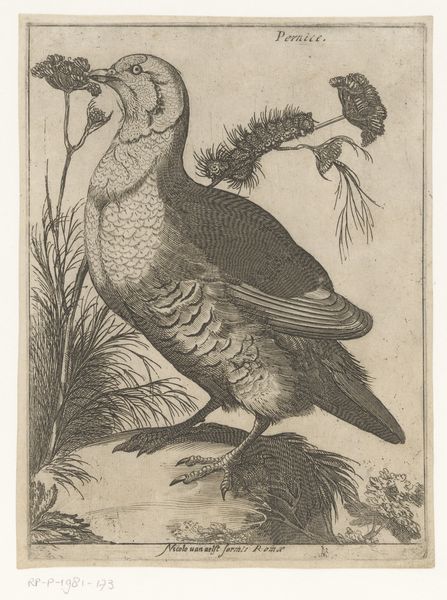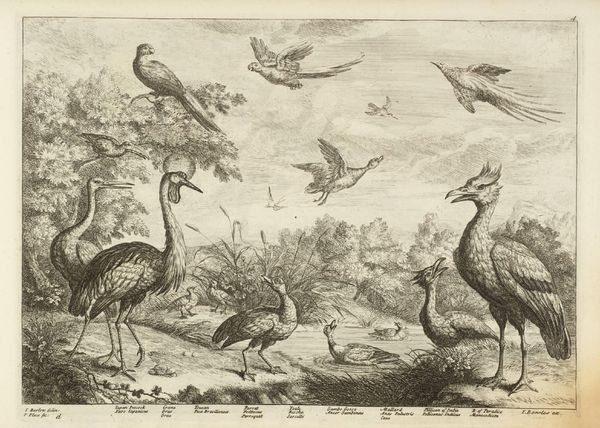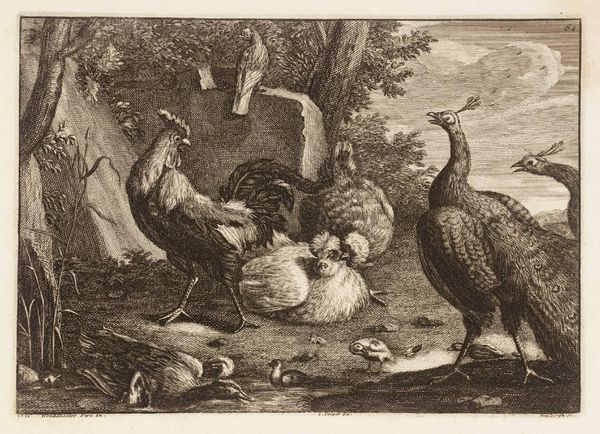
drawing, ink, pen
#
drawing
#
quirky sketch
#
pen drawing
#
pen illustration
#
pen sketch
#
landscape
#
personal sketchbook
#
ink
#
ink drawing experimentation
#
pen-ink sketch
#
pen work
#
sketchbook drawing
#
pen
#
genre-painting
#
sketchbook art
Dimensions: height 120 mm, width 92 mm
Copyright: Rijks Museum: Open Domain
Editor: So, this is "Gevogelte in een landschap," or "Poultry in a Landscape," created sometime between 1639 and 1677. It's an ink drawing—a flurry of pen strokes. It feels… spontaneous. Almost like a quick study. What do you see in this piece? Curator: I see an interesting tension between the supposed 'high art' of landscape and genre painting and the very material reality of these birds as…well, food. Consider the consumption patterns of the 17th century. This drawing isn't just a pleasant pastoral scene. Editor: Are you saying it reflects the contemporary agricultural practices? Curator: Exactly! The labor involved in raising these animals, their economic value, their very transformation into commodities - the drawing hints at all this. The quick strokes you noted are, in effect, the visible manifestation of labor, a recording of a moment of material engagement between the artist, the pen, and the economic reality of the Dutch Golden Age. Note how the artist hasn't idealized the birds; they are simply *there*, a part of the working landscape. How does understanding that change how you see the "spontaneity" of the drawing? Editor: It makes it less…charming, and more grounded. Almost like documentary. The medium of ink, too—cheap, easily accessible—highlights the everyday nature of the subject. Curator: Precisely. It bypasses traditional art, instead it emphasizes the means of production and the material context of everyday life. Editor: I guess I never considered how much a simple drawing of poultry could reveal about labor and consumption. Curator: And the transformative power of artistic process, bringing material reality to the fore!
Comments
No comments
Be the first to comment and join the conversation on the ultimate creative platform.
